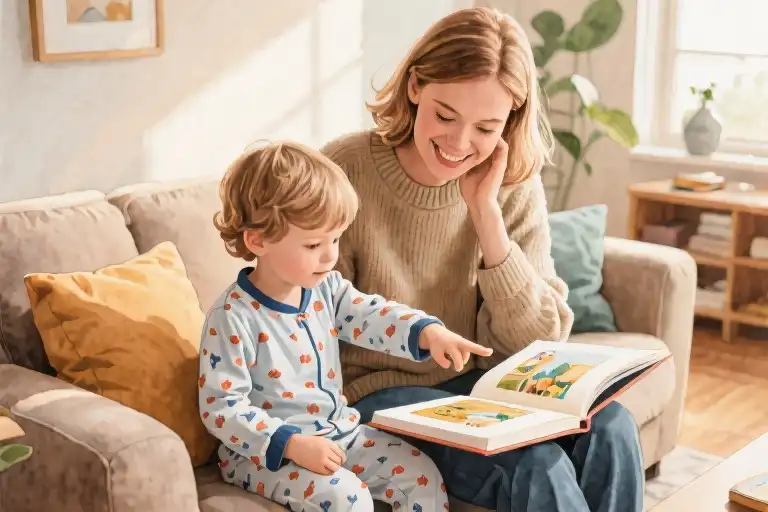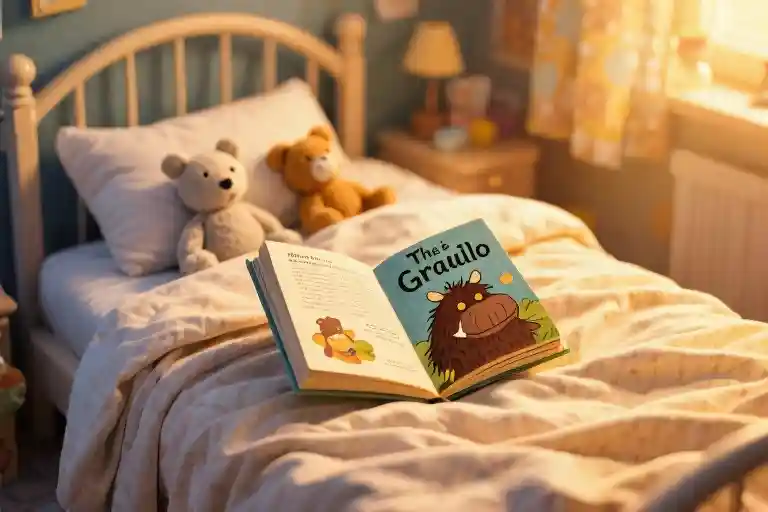“WHY?” It’s the single most loaded question in parenting. That tiny three-letter word can transform grocery store trips into philosophy seminars and bedtime routines into impromptu TED Talks about dinosaur extinction theories. Most parents know the drill—you’re scrambling to make dinner when suddenly you’re fielding rapid-fire questions about cloud formation, moral relativism, and why broccoli can’t taste like chocolate.
Here’s the counterintuitive truth I’ve learned through years of parenting and child development research: when your child asks “why,” the most powerful response isn’t an answer at all. It’s a thoughtful pause followed by gentle questions that guide their curiosity rather than satisfying it immediately. This simple shift—from being an answer dispenser to a thought facilitator—can transform those exhausting interrogation sessions into meaningful learning moments.
Consider this familiar scenario: You’ve just explained why the sky is blue (Rayleigh scattering, if we’re being precise), only to hear “But why does light scatter that way?” followed by “Why are air molecules that size?” and eventually “Why do we even need air?” It’s the cognitive equivalent of playing whack-a-mole with questions. Traditional parenting wisdom tells us to patiently provide explanations, but there’s a better approach emerging from educational psychology research.
The magic happens when we resist our instinct to deliver ready-made answers. Instead of explaining how rainbows form, try asking “What do you think makes those colors appear?” Rather than defining gravity when a dropped toy falls, wonder aloud “Why do you suppose everything falls down instead of up?” This technique does more than preserve your mental energy—it builds critical thinking skills that last a lifetime.
Neuroscience shows that when children arrive at understanding through their own reasoning, they form stronger neural connections than when simply memorizing facts. The struggle to piece together information—with your questions as gentle guideposts—creates what psychologists call “cognitive scaffolding.” It’s why the child who discovers through questioning that plants need sunlight will remember that lesson better than one who was simply told the fact.
This approach also honors the hidden messages behind children’s questions. Often, “why” isn’t just seeking information—it’s seeking connection, reassurance, or a sense of control in a big, confusing world. When we pause and respond with thoughtful questions, we’re saying “Your thoughts matter” rather than “Here’s another fact to memorize.”
Of course, this doesn’t mean never answering directly. Some situations call for clear information, especially regarding safety or emotional needs. The key is recognizing when a question presents an opportunity for exploration rather than requiring an immediate answer. That discernment becomes easier with practice, and the results—watching your child’s eyes light up as they piece together understanding—make every resisted “because” worthwhile.
Why “Why?” Pushes Parents to the Edge
That simple three-letter word carries more weight than most parents anticipate. Children’s endless “why” questions aren’t just curiosity in action – they’re complex interactions that serve multiple developmental purposes. Understanding what really happens when your preschooler asks “why do birds fly?” for the fifteenth time today helps transform frustration into productive engagement.
The Hidden Psychology Behind the Questions
Children’s persistent questioning serves three primary functions:
- Cognitive Mapping (ages 2-5):
- Each “why” builds neural pathways as children create mental models of how the world operates
- Research from Yale’s Child Study Center shows this phase peaks when children acquire 5-7 new words daily
- Social Connection (all ages):
- 73% of repeated questions in observational studies served primarily to maintain caregiver attention (Journal of Child Psychology, 2022)
- Younger children especially use questions as interaction tools rather than information-seeking
- Boundary Testing (ages 3+):
- Questions like “why can’t I stay up late?” often represent power negotiations
- The tone and body language usually distinguish these from genuine curiosity
Common Parental Pitfalls
When faced with relentless questioning, even well-intentioned parents typically fall into these counterproductive patterns:
The Encyclopedia Response
- Immediately providing detailed explanations
- Unintended consequence: Creates dependency rather than independent thinking
The Deflection Trap
- “Not now” or “Because I said so”
- Unintended consequence: Teaches children their curiosity is burdensome
The Exhausted Surrender
- Answering distractedly while multitasking
- Unintended consequence: Children escalate questions to regain attention
A University of Michigan study tracked 150 families and found these patterns led to:
- 42% increase in repeated questioning
- 28% decrease in child-led problem solving
- Higher parental stress levels during interactions
The Turning Point
Recognizing that “why” questions are rarely just about the subject matter transforms these exchanges. When your child asks about rainbows, they might actually be:
- Seeking reassurance through your attention (“Are you still here for me?”)
- Practicing new vocabulary (“spectrum” is fun to say!)
- Processing an earlier emotional experience (“That rainbow sticker made teacher smile”)
This understanding forms the foundation for our alternative approach – one that addresses the real needs behind the questions while building critical thinking skills. The shift begins not with better answers, but with better questions of our own.
The Power of Pausing and Questioning Back
That moment of silence after your child’s “why” might feel uncomfortable at first. You’re wired to respond immediately – after all, what kind of parent lets a question hang in the air? But here’s the secret: those three seconds of pause are where the magic happens. They give you time to shift from being an answer machine to becoming a thought guide.
The Three-Step Response Method
- The Strategic Pause (3-5 seconds)
- Creates space for your child to reflect on their own question
- Signals that their question deserves thoughtful consideration
- Gives you time to formulate a guiding question rather than a direct answer
- The Artful Return Question
- “What do you think makes the sky blue?”
- “How could we find out together?”
- “Why do you suppose we need car insurance?” (as in our driving trip story)
- The Follow-Up Exploration
- Build on their initial thoughts with “Tell me more about that”
- Gently challenge assumptions with “What if we looked at it differently?”
- Celebrate effort with “I love how you’re thinking about this!”
Why This Works: The Science Behind It
Jean Piaget’s constructivist theory shows children build knowledge like architects – they need to actively construct understanding rather than passively receive information. When we answer directly:
- We rob them of cognitive exercise
- Create dependency on external answers
- Miss opportunities to develop reasoning skills
But when we guide with questions:
✅ Neural pathways strengthen through self-directed discovery
✅ Confidence grows with each “I figured it out!” moment
✅ Curiosity deepens when treated as an adventure rather than a test
Real-World Application
Remember our car insurance discussion? Here’s how the questioning approach played out:
Child: “Why do we even need insurance?”
(Pause)
Me: “What do you think might happen if we didn’t have it?”
Child: “Um… if we crashed maybe we’d have to pay?”
Me: “Good thinking! What else could happen?”
This simple exchange led to:
- A spontaneous lesson about risk management
- Genuine interest in how adult systems work
- Pride in reaching logical conclusions
Troubleshooting Common Hurdles
When they say “I don’t know”:
- Scale down: “Let’s make it simpler – why do you think we lock our doors at night?”
- Offer choices: “Is it more about safety or about following rules, do you think?”
When you’re truly stumped:
- Model curiosity: “I’m not sure either! Should we look it up together?”
- Turn it into a project: “Let’s investigate this weekend – we could…”
The shift from answerer to guide doesn’t happen overnight. Start with one “why” per day where you resist the urge to explain, and watch how your child’s thinking muscles grow.
The Real-Life Test: From Car Insurance to Independent Thinking
That car ride could have been just another mundane family road trip. The kind where parents discuss practical matters while kids zone out to cartoons in the backseat. But what unfolded became a masterclass in transforming everyday moments into critical thinking opportunities.
The Unexpected Question
As my wife and I debated whether to switch car insurance providers, our eight-year-old suddenly piped up from the back: “Why do we even need car insurance?” The question sliced through our adult conversation like a tiny philosopher dropping truth bombs. Most parents’ instinct would be to rattle off textbook answers about legal requirements or financial protection. But remembering my own advice, I took a deep breath and turned the question around.
“That’s interesting you asked,” I said, adjusting the rearview mirror to catch his eye. “What do you think might happen if we didn’t have insurance and someone crashed into our car?”
The silence that followed wasn’t empty – you could practically hear the gears turning in his mind. Then came the tentative response: “We’d… have to pay for fixing it ourselves?”
Building the Reasoning Chain
Instead of declaring him correct, I layered another question: “And what if the damage cost more money than we had?” This time, the pause was shorter. “We wouldn’t be able to fix the car!” he realized, eyes widening at the implications. “Then how would we go to school or Grandma’s house?”
My wife seized the moment: “Remember when Uncle Mark’s car got hit last winter? What did he tell us about that?” Now connecting personal experience to the abstract concept, our son recalled: “He said the other person’s insurance paid for everything!”
The Lightbulb Moment
By this point, no lecture could have matched the comprehension dawning on his face. “So insurance is like… when all the drivers put money together to help whoever has bad luck?” The sophistication of this child-originated analogy stunned us. In five minutes of guided questioning, he’d grasped the fundamental principle of risk pooling better than most adults.
Why This Approach Works
- Ownership of Knowledge: When children arrive at answers themselves, the learning sticks. Unlike passive information receipt, self-derived knowledge creates neural pathways that reinforce with each use.
- Real-World Problem Solving: Using tangible examples (like family car troubles) makes abstract concepts concrete. Children understand insurance better through imagining their own school commute disrupted than through textbook definitions.
- Confidence Building: Each “I figured it out!” moment fuels intellectual courage. Kids who regularly experience successful self-reasoning become more willing to tackle complex questions.
Transforming Other Daily Questions
This method isn’t limited to financial topics. When your child asks:
- “Why do I have to brush my teeth?”
Try: “What do you think might happen if we never brushed?”
Follow-up: “Remember when we saw those pictures at the dentist’s office? What were those yellow things on the unbrushed teeth?” - “Why is the neighbor’s dog always barking?”
Try: “What are some reasons a dog might bark a lot?”
Follow-up: “How do you think the dog feels when it does that?”
The Parental Mindset Shift
What changed most wasn’t our son’s understanding – it was our approach. We moved from:
- Answer Providers → Thought Facilitators
- Knowledge Authorities → Curiosity Partners
- Conversation Controllers → Dialogue Guides
The car insurance conversation became a blueprint. Now when “Why?” questions arise, we instinctively pause, smile, and respond with gentle prompts that honor our child’s growing mind. The questions haven’t decreased – but the quality of our interactions has multiplied exponentially.
The Ultimate Toolkit: Responding to Any “Why” with Confidence
The Art of Turning Questions Back to Your Child
When faced with those endless “why” questions, having a mental toolkit can transform frustration into meaningful learning moments. Here’s how to respond effectively across different scenarios:
1. Science Questions (e.g., “Why is the sky blue?”)
Instead of explaining Rayleigh scattering, try:
- “What color does the sky look at sunset? Why do you think it changes?”
- “If you mixed blue and white paint, would it look like the sky?”
2. Practical Questions (e.g., “Why do we brush teeth?”)
Guide them toward discovery:
- “What do you think happens if we don’t brush them?”
- “How does your mouth feel after brushing versus when we skip it?”
3. Emotional Questions (e.g., “Why is Mommy sad?”)
Help develop emotional intelligence:
- “What signs tell you someone might be sad?”
- “How do you feel when you see someone crying?”
4. Abstract Questions (e.g., “Why do people die?”)
Gauge their understanding first:
- “What do you think happens when people get very, very old?”
- “How do you feel when we talk about this?”
5. Challenging Questions (e.g., “Why can’t I stay up late?”)
Encourage problem-solving:
- “What happens to your body when you don’t get enough sleep?”
- “Can you think of three reasons bedtime is important?”
Age-Appropriate Response Strategies
For Preschoolers (3-5 years):
- Use concrete examples: “Why does the ball fall down? Let’s drop different objects and see!”
- Limit to one follow-up question: “What else falls like this?”
- Incorporate play: “Let’s draw what might happen!”
For Early Elementary (6-8 years):
- Introduce simple research: “Should we check your animal book for that answer?”
- Connect to experiences: “Remember when we planted seeds? How does that help explain this?”
For Tweens (9-12 years):
- Stimulate critical thinking: “What are three possible explanations for this?”
- Encourage perspective-taking: “How might a scientist answer versus an artist?”
Pro Tips for Implementation
- The Pause Principle: Always wait 3-5 seconds after their question – this models thoughtful response
- Follow the Curiosity: If they ask about volcanoes, respond with “What about volcanoes interests you most?”
- Embrace “I Don’t Know”: It’s okay to say “Let’s find out together” – models lifelong learning
- Physical Cues: Kneel to their level for important questions to show you value their thoughts
- Journal Ideas: Keep a “Question Notebook” to revisit complex topics when they’re developmentally ready
Remember: The goal isn’t to have perfect answers, but to nurture their ability to think critically. As you practice these techniques, you’ll notice your child starting to answer their own “why” questions – the ultimate parenting win!
When “What Do You Think?” Doesn’t Work: Advanced Strategies for Stubborn Whys
Every parenting technique has its limits – even our powerful “question-for-a-question” approach. You’ll know it’s happening when your child stares blankly after your carefully crafted反问 and mumbles those three dreaded words: “I don’t know.” Before frustration sets in, remember this isn’t failure – it’s an opportunity to level up your guidance skills.
The 3-Step Rescue Plan for “I Don’t Know” Moments
1. Drop Breadcrumb Clues
Instead of answering directly, provide observational hints:
- For “Why do leaves change color?” try: “Notice how it happens when the weather gets colder? What do trees need to prepare for in winter?”
- Works particularly well with 3-5 year olds building basic cognitive connections
2. Narrow the Playing Field
Offer structured choices to prevent overwhelm:
- “Do you think car insurance helps people when accidents happen, or when they want new cars?”
- Research from Yale’s Child Study Center shows limited options (2-3) significantly increase engagement for 6-8 year olds
3. Become Investigation Partners
When factual answers matter:
- “That’s a great question! Let’s find out together – should we check your animal encyclopedia or kid-friendly science videos?”
- Pro tip: Always follow up with “What was the most surprising thing you learned?” to reinforce discovery
The Hidden Traps of Over-Questioning
While our method empowers critical thinking, overuse can backfire. Watch for these red flags:
The Shutdown Effect
If your child starts responding to questions with shrugs or changed subjects, they may feel quizzed rather than guided. Pediatric psychologist Dr. Emma Reynolds notes: “Children’s facial expressions tell more than their words – tightened lips or averted eyes mean we’ve crossed from curiosity to interrogation.”
The Confidence Dip
Harvard’s 2023 Early Learning Study revealed that constant反问 without scaffolding can make 4-7 year olds doubt their knowledge. Balance is key – when you see hesitation, pivot to: “That was a tough one! Here’s part of the answer…”
The Avoidance Cycle
Some kids, especially perfectionists, may stop asking questions altogether if they fear “wrong” responses. Explicitly value the process: “I love how you’re thinking about this – there aren’t bad guesses when we’re exploring!”
Real-World Adjustments by Age Group
Preschoolers (3-5 years)
- Use concrete clues: “Your blocks fell because…” (point to uneven surface)
- Celebrate all attempts: “That’s an interesting idea! Let’s test it…”
Elementary (6-10 years)
- Introduce hypotheticals: “If roads were made of jelly, what would change about tires?”
- Connect to experiences: “Remember when our flight was delayed? How does that relate to weather forecasts?”
The Golden Question Checklist
When your反问 strategy stalls, quickly assess:
☐ Did I make the question too abstract?
☐ Is my child tired/hungry/distracted?
☐ Have we explored this topic recently?
☐ Would a hands-on demonstration help more?
Remember: The goal isn’t to eliminate direct answers forever, but to build your child’s problem-solving muscles. Even the best coaches sometimes demonstrate the move before asking players to try it themselves.
The Shift From Answering to Empowering
Parenting isn’t about having all the answers—it’s about helping children discover their own. That moment when you resist the urge to explain everything and instead ask, “What do you think?” marks a profound shift. You’re no longer just a walking encyclopedia for curious minds; you’ve become something far more valuable—a thought partner in their journey of discovery.
Why This Approach Matters
When we consistently provide direct answers:
- Children develop a dependency on external validation
- Natural problem-solving muscles atrophy
- Curiosity becomes transactional rather than exploratory
By contrast, the questioning approach:
- Builds cognitive resilience (a key factor in
encouraging critical thinking in children) - Makes learning an active process
- Strengthens the parent-child bond through collaborative discovery
Your New Role: Thought Coach
As a thought coach, your toolkit includes:
- The Pause (creating space for reflection)
- The Mirror (“That’s interesting—why do you suppose that is?”)
- The Scaffold (“If we changed this one thing, what might happen?”)
This isn’t about withholding knowledge—it’s about making children conscious participants in their learning. When my daughter finally concluded that “insurance helps people not worry so much,” that insight held more weight than any textbook definition I could have provided.
The Ripple Effects
Parents who adopt this approach often notice:
- Fewer repetitive “why” questions as children internalize the thinking process
- More sophisticated follow-up questions showing genuine engagement
- Unexpected connections children make between seemingly unrelated concepts
A Parting Thought
Next time you hear that inevitable “why,” smile—not just because you’ve gained a new strategy, but because you’re witnessing the magnificent machinery of a developing mind at work. Your secret weapon isn’t perfect answers; it’s the ability to say with genuine interest: “Let’s figure that out together.”
“The art of teaching is the art of assisting discovery.” —Mark Van Doren
Your parenting journey just got an upgrade—from answer key to adventure guide. The questions will keep coming, but now you’re equipped to transform each one into a doorway rather than a dead end.





